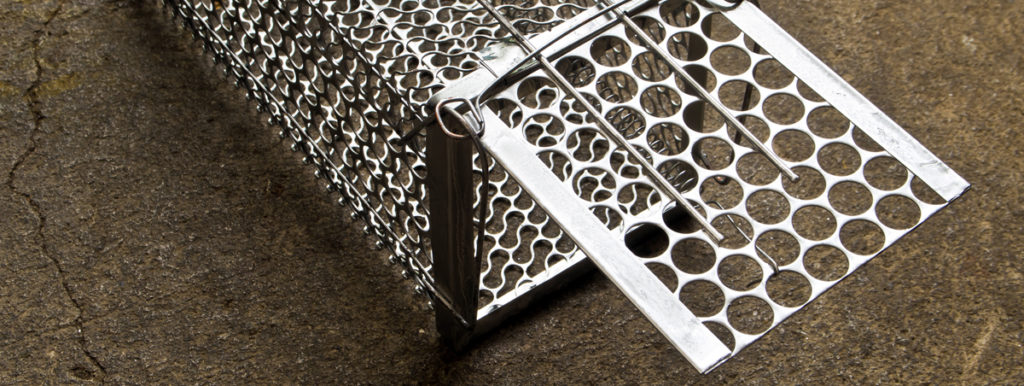Voles, Moles, & Gophers… Oh My! Controlling Burrowing Pests
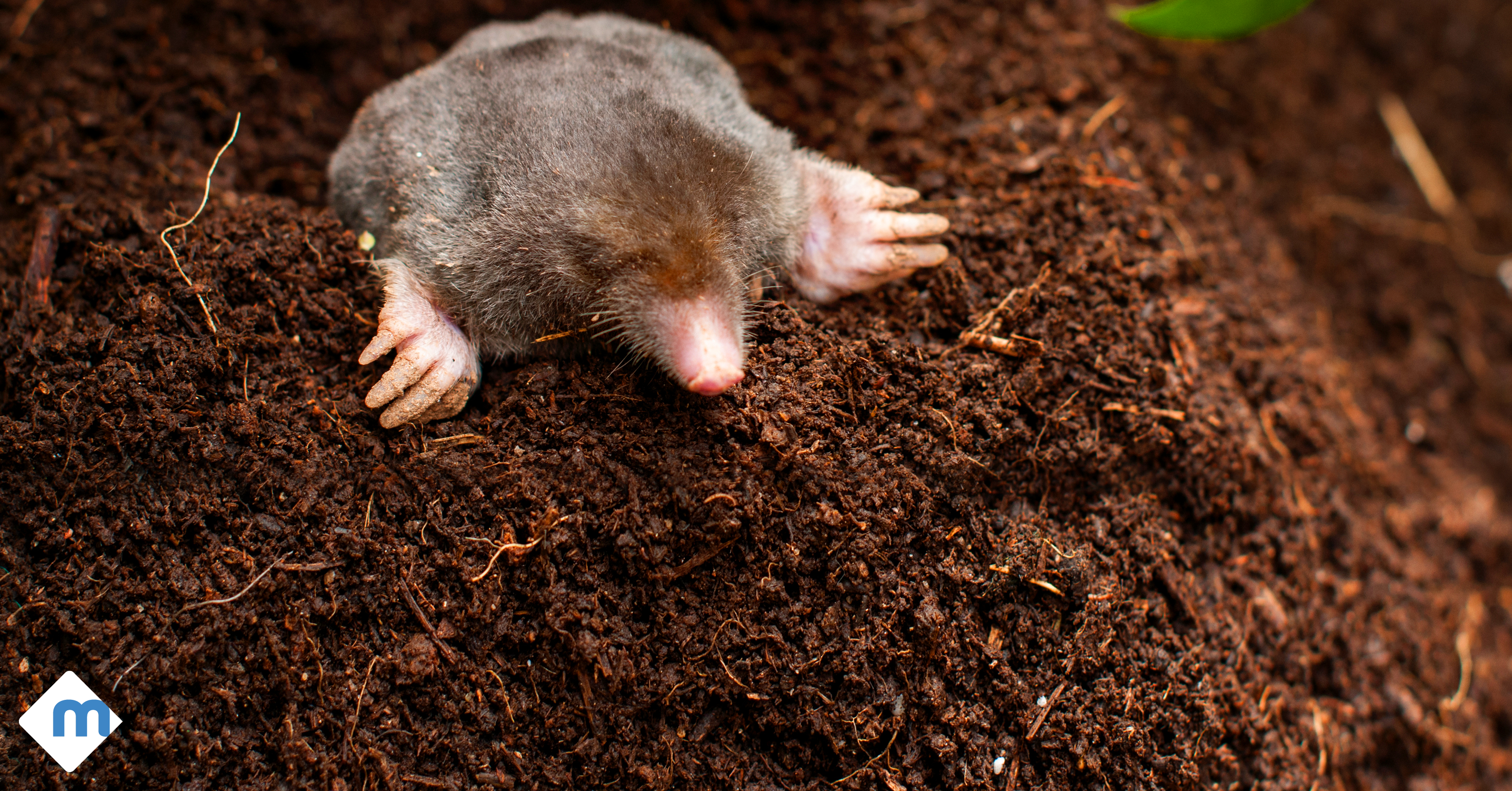
Since voles, moles, and gophers live their lives primarily underground, rarely being seen on the surface, it may seem as though controlling these burrowing pests is a near-impossible task. Despair not—there are numerous courses of action for even novice homeowners. Take action to banish ground pests before your yard transforms into a dismal vegetable graveyard.
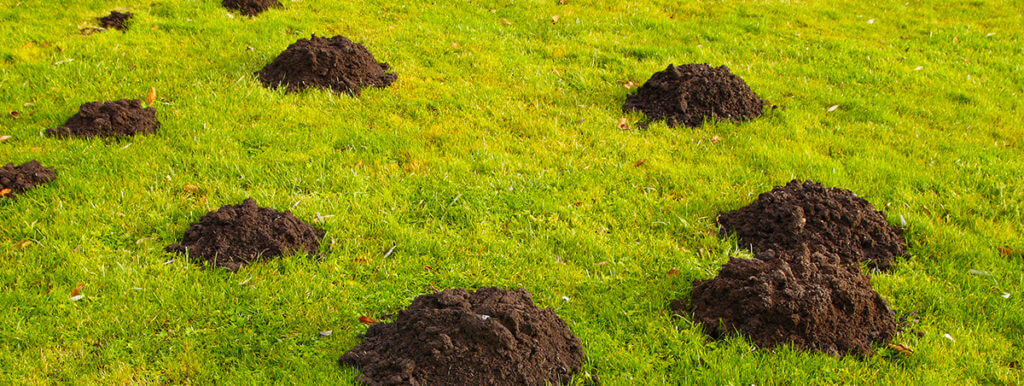
It’s just as you feared: you’ve designed the yard of your dreams, spent hours upon hours clearing weeds, and created the perfect soil composition to allow your plants to thrive, only to wake up in the morning to see runways, mounds, and scattered holes—the hallmarks of burrowing pests. Learn how to evict these unwelcome animals from your property with this guide.
How to Identify Underground Rodents Burrowing in Your Yard
Voles, moles, and gophers can appear similar to the untrained eye. In fact, though they all burrow and prefer to reside underground, they are three distinctly different animals.
Common Underground Rodents
- VOLES: These mouse-like rodents are frequently confused with common mice or shrews. Voles, about six to eight inches in length, have short tails, small paws boasting long claws, and small, rounded ears. Vole holes are even with the surface of the ground. These mammals make their mark in your yard by digging runways at or near the surface, creating vein-like highways in your lawn and flowerbeds.
- MOLES: Measuring at about half a foot, moles’ most distinct features are their long snouts, wide feet, and small, nearly invisible eyes. Moles are built for digging, capable of excavating up to 150 feet of tunnels underground per day. When moles come up to the surface, they create volcano-shaped molehills and raised highways.
- GOPHERS: Often the largest of these ground pests, gophers can be six to twelve inches long and can be identified by their four large, exposed teeth. Gophers are capable of uprooting entire plants and pulling them down into their burrows, which can stretch downward six feet into the ground. Gophers attempt to plug their fan-shaped burrow entries with soil to protect their homes from predators.
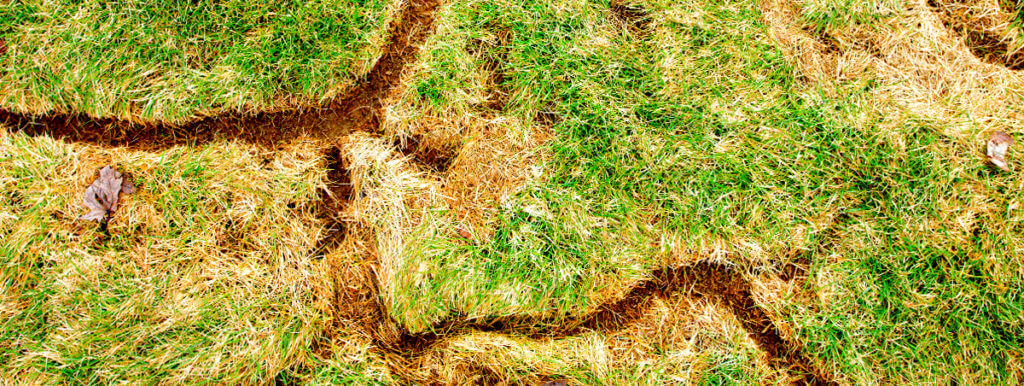
Assess the Damage
If your plants have recently been the victims of hungry animals, point your finger at voles and gophers. Though both voles and gophers are indulgent vegetarians, moles are insectivores who feast especially on earthworms and other insects. This isn’t exactly good news for your plants; all three burrowing animals can cause irreparable damage to underground root systems. Not only do they jeopardize the health and longevity of your plants, they also pose a risk to any underground cables, sprinkler systems, and even weak home foundations. Burrowers are no respecters of any underground systems but their own.
Since these digging animals can be terrifically productive (a single mole is able to dig up to 18 feet per hour), the potential disruption of your soil’s composition, weight, and distribution can create hostile conditions for your flowers. Gophers’ burrows can stretch to be about 2,000 square feet underground, taking up a lot of valuable real estate. Such a landscape disturbance also contributes to soil erosion, making any of your future gardening plans challenging or even impossible.
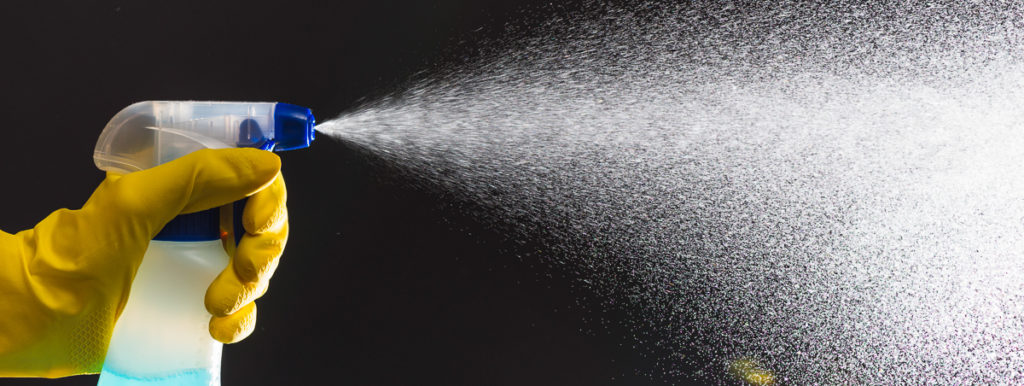
Deter Them from Your Yard
Pest control professionals and amateur gardeners alike have turned to one potent ingredient when dealing with voles, moles, and gophers: castor oil. Want to tackle the issue right away? Mix one gallon of water with a quarter cup of castor oil and a few tablespoons of dish soap. Spray this mixture liberally on and around any mounds or visible burrows, as well as near your plants. The concoction will make these pests sick, making your garden seem inhospitable and send them packing.
When it comes to keeping burrowing invaders from sticking around, hijacking their biology can be the most persuasive plan of attack. These three animals all have an acute sense of smell, often using only their olfactory systems to navigate their dark burrows underground. Voles, moles, and gophers sometimes can be repelled by using simple household items placed around or in their burrows.
Some pro-approved, DIY repellents include:
-
- Peppermint oil
- Mothballs
- Spearmint leaves
- Hot sauce
- Jalapeño peppers
- Dryer sheets
Another way to make your yard less appealing to moles and gophers is to address one of their food sources: grubs. Both moles and gophers enjoy eating grubs, so the fewer grubs you have in your yard, the less appetizing your property becomes to these pests. Voles, on the other hand, are herbivores and do not eat grubs.

Let Fido Loose
Even though insect-eating moles are considered predators themselves, they are as vulnerable to larger predators as voles and gophers. Some of the most threatening predators, in fact, may already be living in your home. Voles, moles, and gophers are all similarly cautious, and they spend the majority of their lives underground to avoid being eaten by larger animals. Even the scent of a possible predator can kick them to the curb. Controlling pesky burrowers can be done simply by letting man’s best friend or any outdoor-acquainted cats roam around in the invaded area. Before letting your pet loose in the yard, be sure to clear dense vegetation. These animals, but especially voles, may be hidden under the brush and weeds in your flower beds.
If your pet doesn’t take a keen interest in helping, spreading their scent in your yard can often be sufficient. Instead of tossing used cat litter or taking the backyard dog scooper straight to the trash, place your pet’s waste in the affected area or in any visible burrow openings. Voles, moles, and gophers will detect the scent and steer clear of any place a predator has made their mark.

Storm Their Burrows
If voles, moles, and gophers insist on extending their stay, homeowners can take action to transform their burrowers’ paradise into hostile living spaces. Commercial smoke bombs and other fumigation methods are forceful ways to remove ground pests.
If you’d like to skip an errand altogether and take matters into your own hands with what you have in your backyard, look no further than your garden hose. Flooding their underground tunnel system works in the same manner as fumigation methods. Voles, moles, and gophers will have no choice but to exit their burrows and find refuge in another, seemingly more secure area.
However, many of the most effective fumigation or flooding methods are helpful only with mild or moderate vole, mole, or gopher infestations, and the safety they seek can even be found in another area of your own yard. Sometimes your best chance at removal using flooding or fumigation can be done through hiring a pest control professional, as they have access to effective products and other mechanisms for more extensive burrowing animal invasions.
Use Exclusion Methods
Since voles, moles, and gophers are scarcely seen above the surface, keeping them away from your yard can be challenging. For difficult cases, exclusion fences are easily installed and are designed specifically to protect your lawn from further destruction by underground intruders. Just be sure to bury the bottom of the fence underground at least two feet down to adequately protect your roots and bulbs.
In addition to placing barriers underground, gopher baskets and other metal barriers can be installed around plants, bushes, & trees to stop gophers and voles from gnawing at the bark when they do emerge to grab a bite. Consider planting valuable flora in raised flower beds. Gophers and voles, while adept diggers, will not attempt a long climb no matter how appetizing the greenery.
Lastly, one foolproof technique to guarantee the removal of voles, moles, and gophers is to utilize traps and cages. Many of these devices can be purchased online or locally. Traps and cages are placed above ground around burrow entries, effectively containing any voles, moles, or gophers that pop up above the soil. Local rodent control laws vary, so before setting any traps, contact your local animal control or pest control company to determine the appropriate options available for capturing and transferring live mammals.
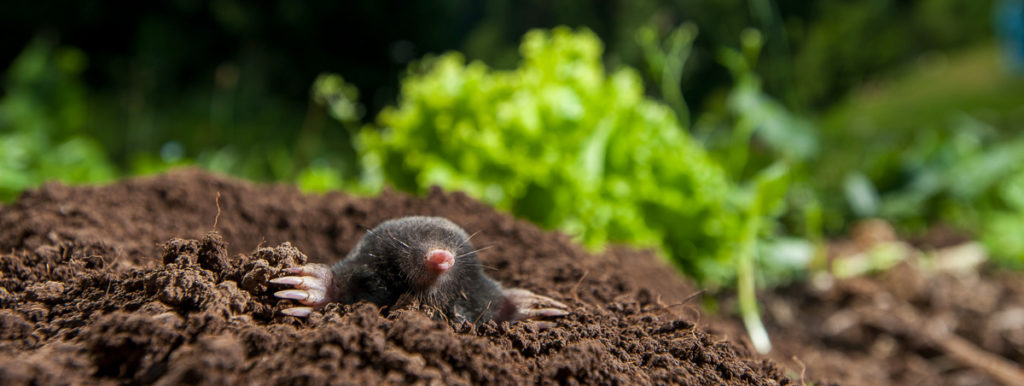
The success and protection of your home and garden is as important to us as it is to you. Our hope is that these simple tips will stop these ground pests in their underground tracks and secure your garden as the rewarding safe haven you’ve strived for it to be. A vole, mole, or gopher problem, if not managed swiftly, can grow from a simple aesthetic nuisance into a full-blown war. If you need any additional tips (or even a second set of hands) in your pest control endeavors, give us a call! We are here as a supportive line of defense against any intruders, big or small, that you may encounter.
Sources
http://ipm.ucanr.edu/PMG/PESTNOTES/pn7433.html
https://wdfw.wa.gov/species-habitats/living/species-facts/pocket-gophers#
https://wdfw.wa.gov/species-habitats/living/species-facts/moles#
https://content.ces.ncsu.edu/north-carolina-agricultural-chemicals-manual/animal-damage-control
https://extension.missouri.edu/g9440 https://cals.arizona.edu/yavapai/anr/hort/byg/archive/managingpocketgopherspart2.html https://www.ctahr.hawaii.edu/uhmg/downloads/home-remedies-OSU.pdf
https://www.volecontrol.com/vole-mole-gopher-info/voles-moles-or-gophers
https://hgic.clemson.edu/factsheet/how-to-tell-the-difference-between-moles-voles/

